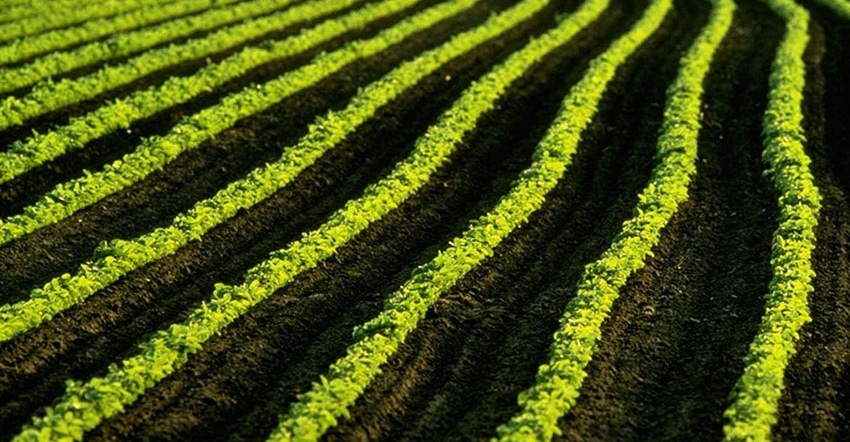
Soybean futures seem like they are stuck in a rut with two-sided trade occurring most days this week. As a matter of fact, if we turn back the calendar two months, the price for July soybeans was within a dime of where it sits currently.
Back in January we covered the implications of the May WASDE report that was released this week, and how it was likely to shape prices heading into summer. Now that the trade has digested the new crop balance sheets, the focus will be on weather and demand.
Weather is what it is, and we will have to deal with it as it comes, but demand is where we can form some opinions.
The export demand USDA is using for the new crop soybean balance sheet is 375 million bushels more than what they have plugged in for the current marketing year. Is this a problem and should we expect stocks to grow from USDA’s estimate of 405 million bushels?
Export demand questioned
After this week’s report, some were quick to suggest old crop soybean export demand could still be too high by 50 to 100 million bushels. While this is possible, USDA announced three sales to China this week. As the trade’s focus shifts from 19/20 to 20/21 carryout, we feel the U.S. should have an aggressive export program from late August through December. The US is now 15 cents per bushel cheaper than Brazil on a FOB basis in July. This does not account for quality and ocean freight advantages for Brazil, but we at AgMarket.Net believe China could purchase 10–20 cargos of beans from the U.S. per week now through harvest.
If this is the case, the market should work on convincing producers to move soybeans which will happen through a combination of basis, spreads, and flat price.
An eye on basis
It is hard to say at this time which will be most significant, but basis is strong and near the highs of the year for the export market. Spreads have already taken away the incentive for producers to plan on storing new crop soybeans in their own bins, much less consider paying for commercial storage. November ’20 soybeans are trading at a premium to July ’21. Over the last six months, any periods where Nov ’20 has traded at a discount to July ’21 have been few, far between and short lived.
Lastly, the charts for November soybeans on a continuous basis should give us a bit of solace as well. The last time a prompt November soybean contract closed the week below $8 per bushel was the week of May 11, 2007. Since that week -- and we are talking thirteen years here -- there have been only two weeks where the front November contract has traded below $8, and neither of those weeks saw a weekly close below $8.
While I will not say that the November ’20 soybean contract cannot change that pattern, statistically speaking two weeks out of a six hundred seventy-six week stretch suggests it’s a level where we have very good support.
Back to WASDE
Circling back to the WASDE report, one thing to point out is the projected stocks-to-use for soybeans compared to the USDA estimate of average farm price. USDA has not projected a stocks-to-use ratio below 10% for soybeans since 2016’s estimate of 7.17%; the report released this week indicates a 9.39% stocks-to-use ratio.
While the projected 20/21 ratio is not quite as low as the 16/17 projection, the 20/21 average farm price of $8.20 is significantly lower than the 16/17 average farm price of $9.47. It stands out even more when compared to the 18/19 and 19/20 projections of 22.89% and 14.87% respectively which were accompanied by average farm price projections of $8.48 and $8.50.
Maybe we need to keep in mind the drag soybeans will likely feel from low corn prices.
With all that being said, let’s hope the Chinese don’t neglect soybeans moving forward.
Contact Brian Splitt directly at 815-665-0463 or anyone on the AgMarket.Net team at 844-4AGMRKT.
The risk of loss in trading futures and/or options is substantial and each investor and/or trader must consider whether this is a suitable investment. AgMarket.Net is the Farm Division of John Stewart and Associates (JSA) based out of St Joe, MO and all futures and options trades are cleared through ADMIS in Chicago IL. This material has been prepared by an agent of JSA or a third party and is, or is in the nature of, a solicitation. By accepting this communication, you agree that you are an experienced user of the futures markets, capable of making independent trading decisions, and agree that you are not, and will not, rely solely on this communication in making trading decisions. Past performance, whether actual or indicated by simulated historical tests of strategies, is not indicative of future results. Trading infromation and advice is based on information taken from 3rd party sources that are believed to be reliable. We do not guarantee that such information is accurate or complete and it should not be relied upon as such. Trading advice reflects our good faith judgment at a specific time and is subject to change without notice. There is no guarantee that the advice we give will result in profitable trades. The services provided by JSA may not be available in all jurisdictions. It is possible that the country in which you are a resident prohibits us from opening and maintaining an account for you.
The opinions of the author are not necessarily those of Farm Futures or Farm Progress.
About the Author(s)
You May Also Like




